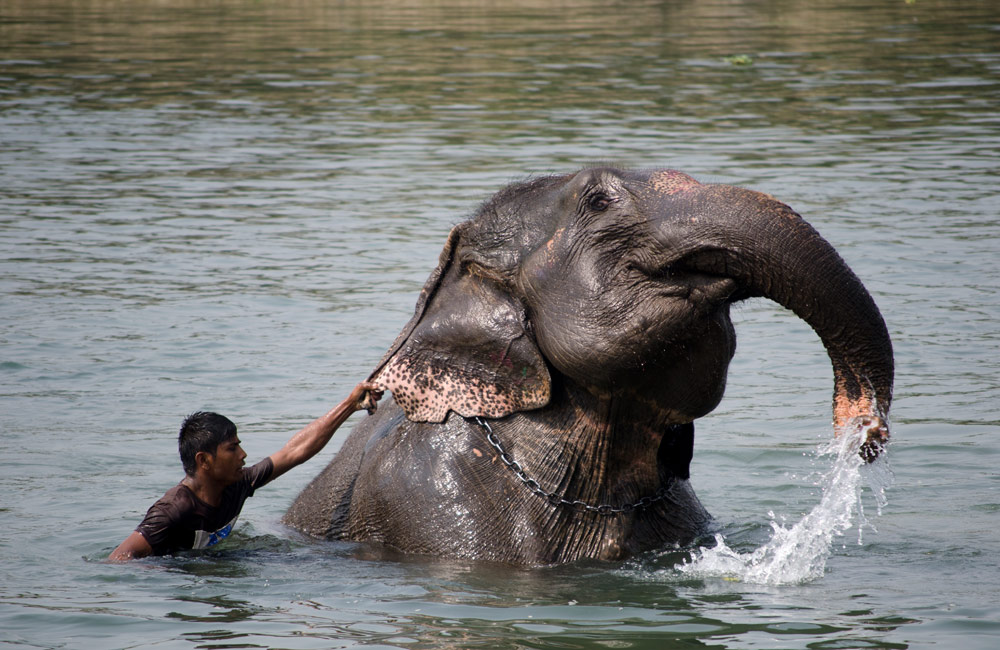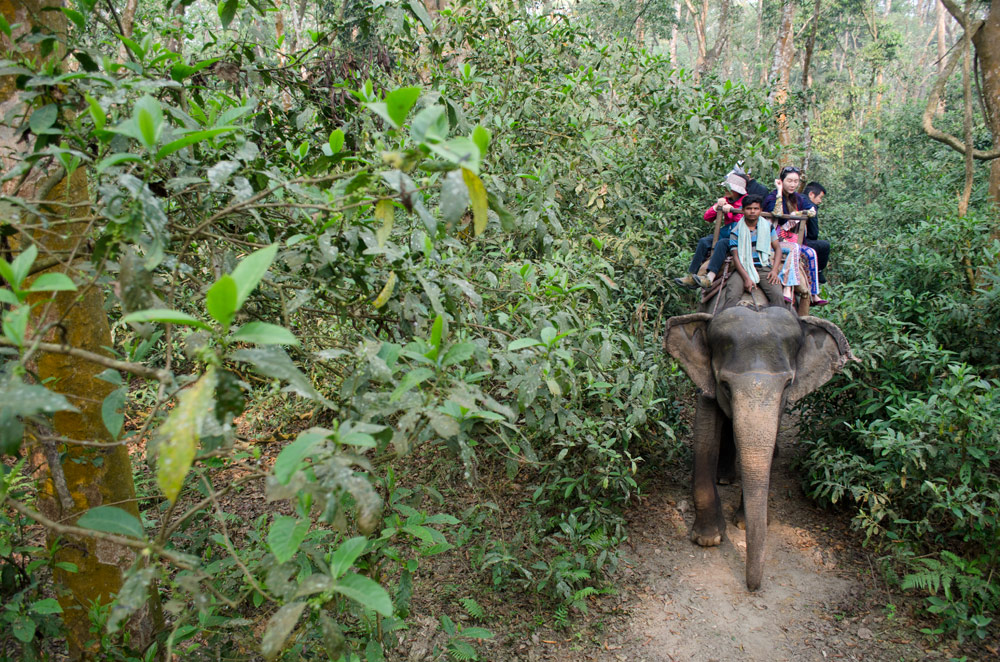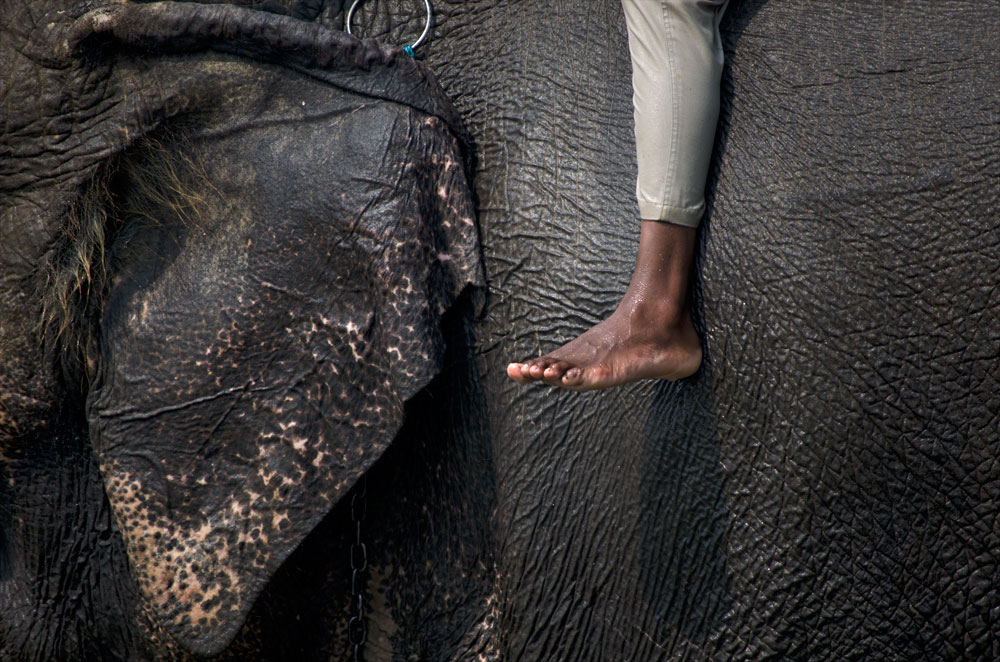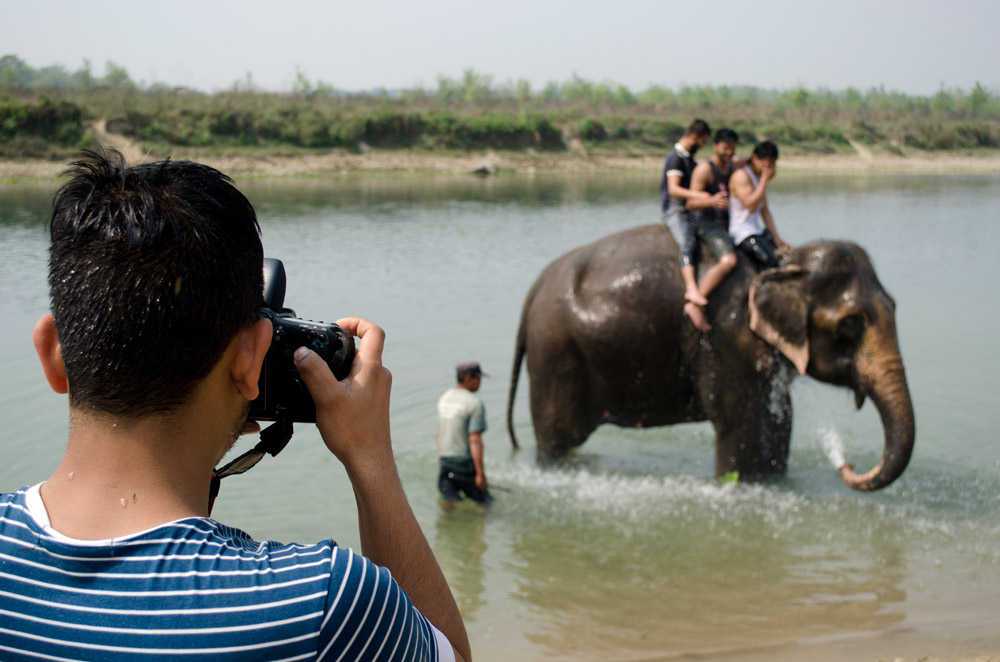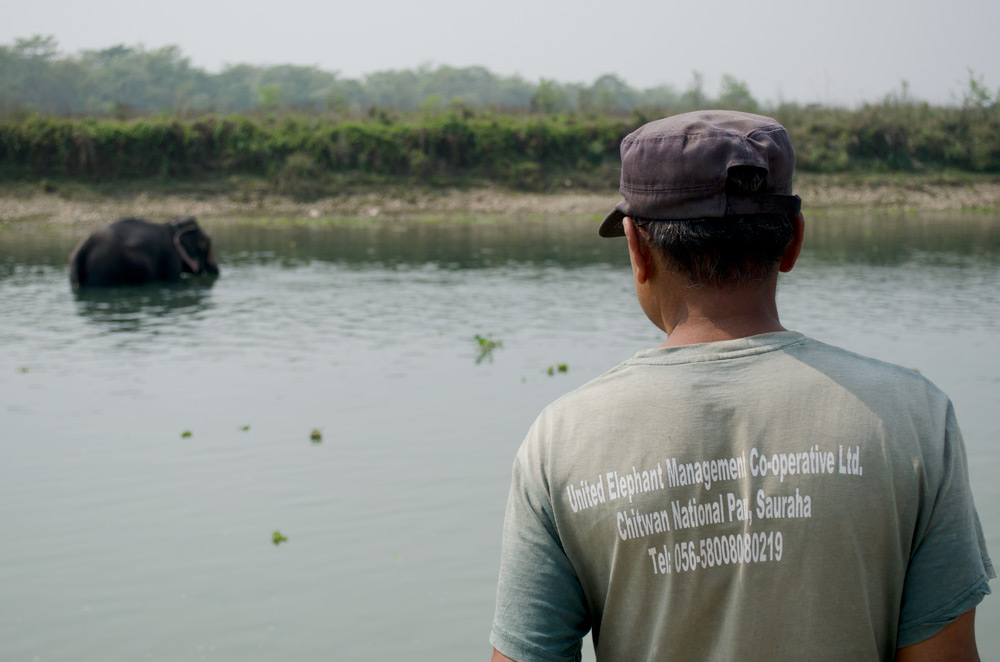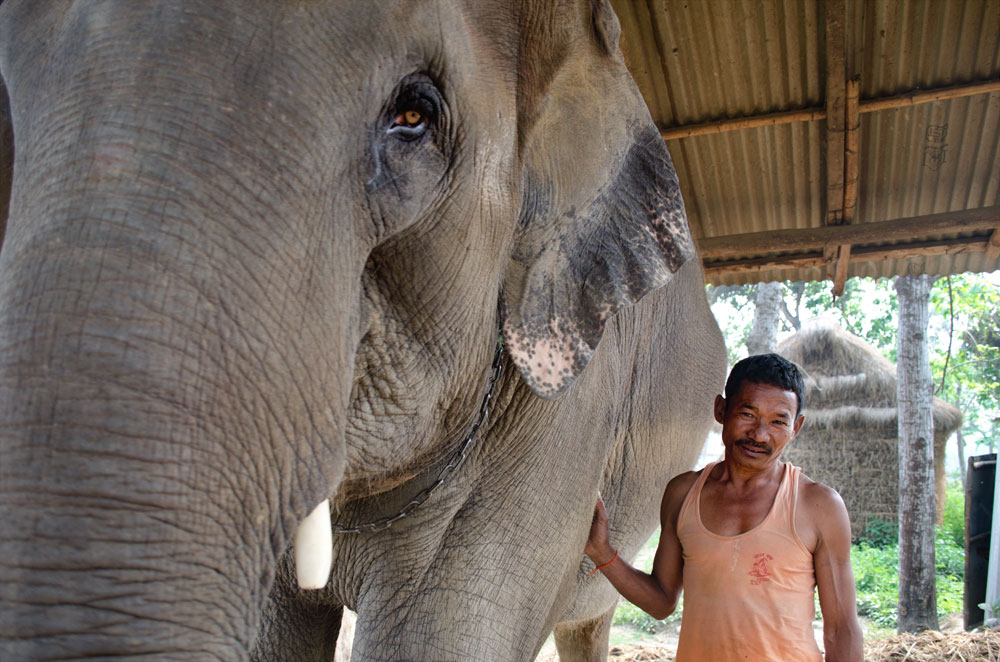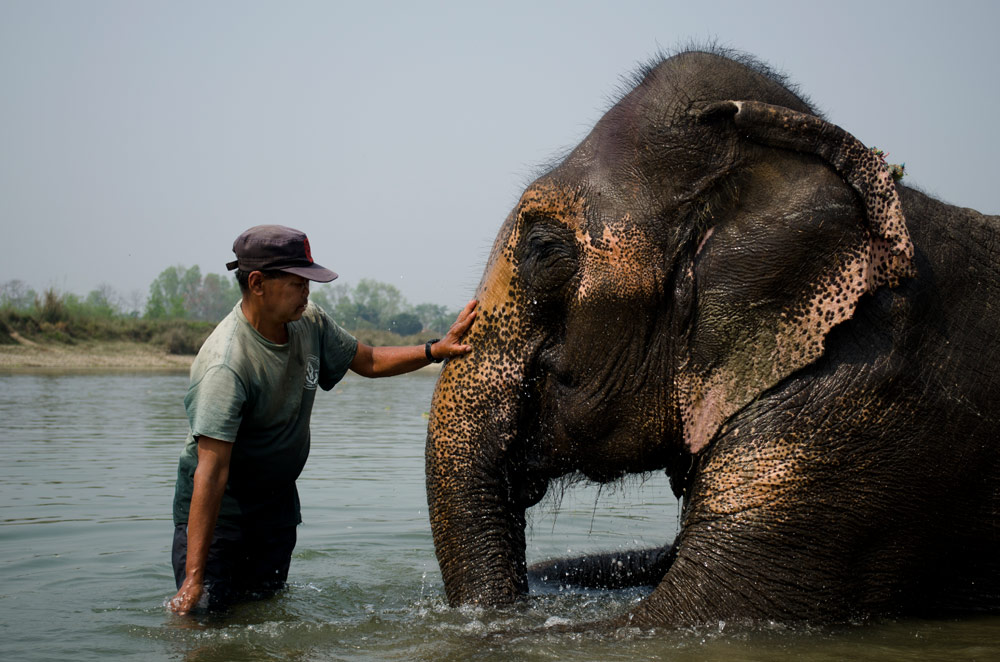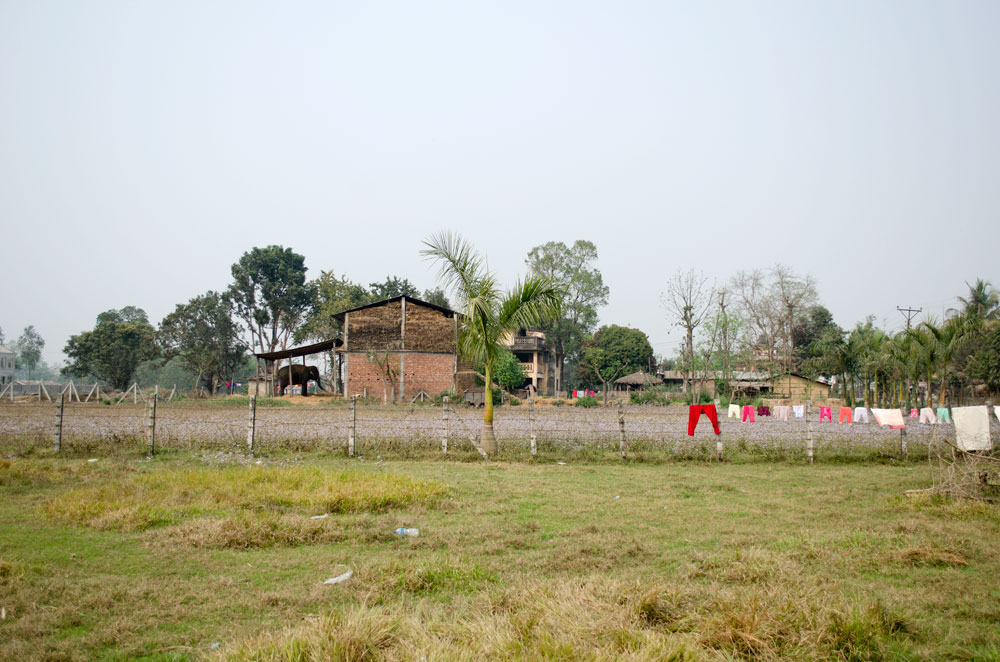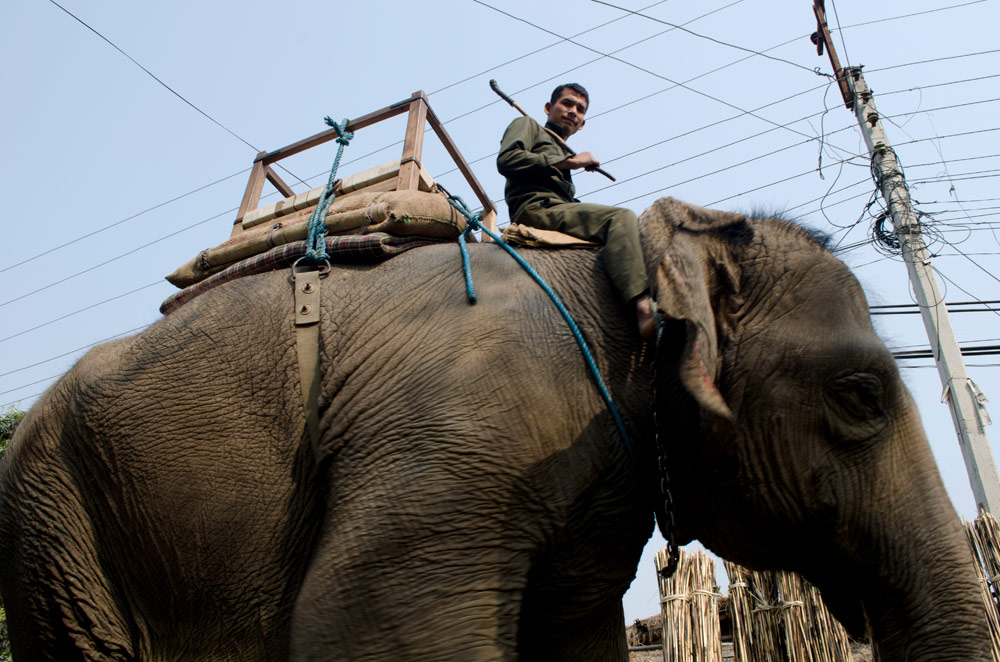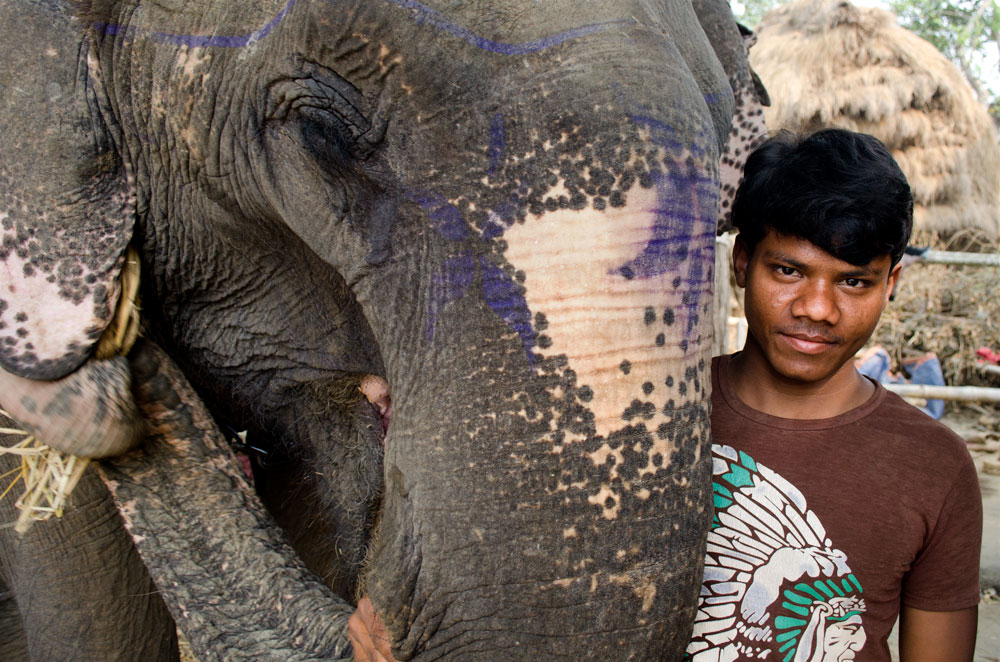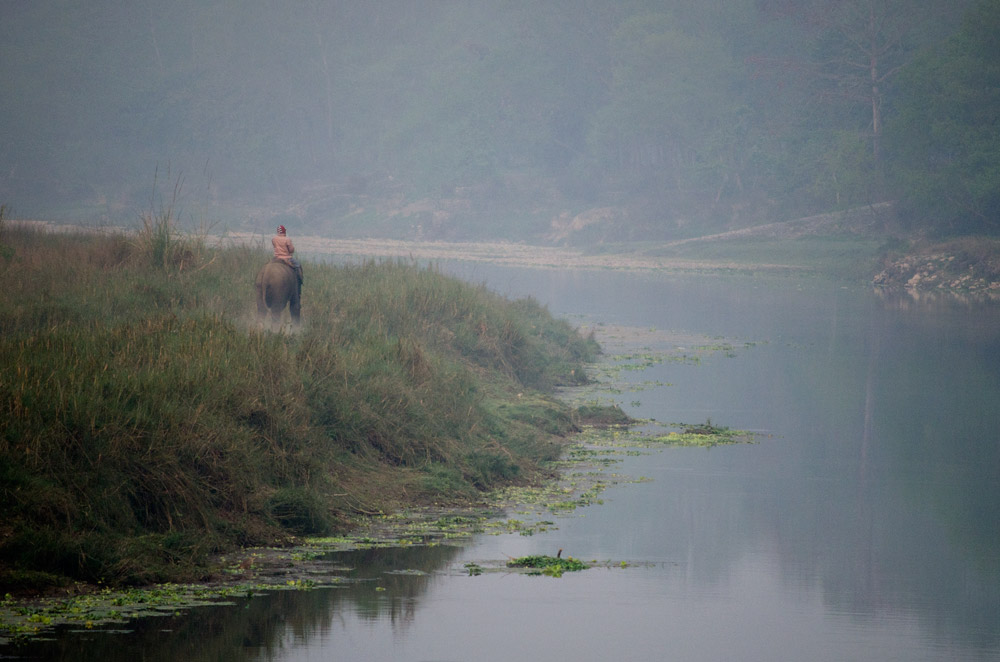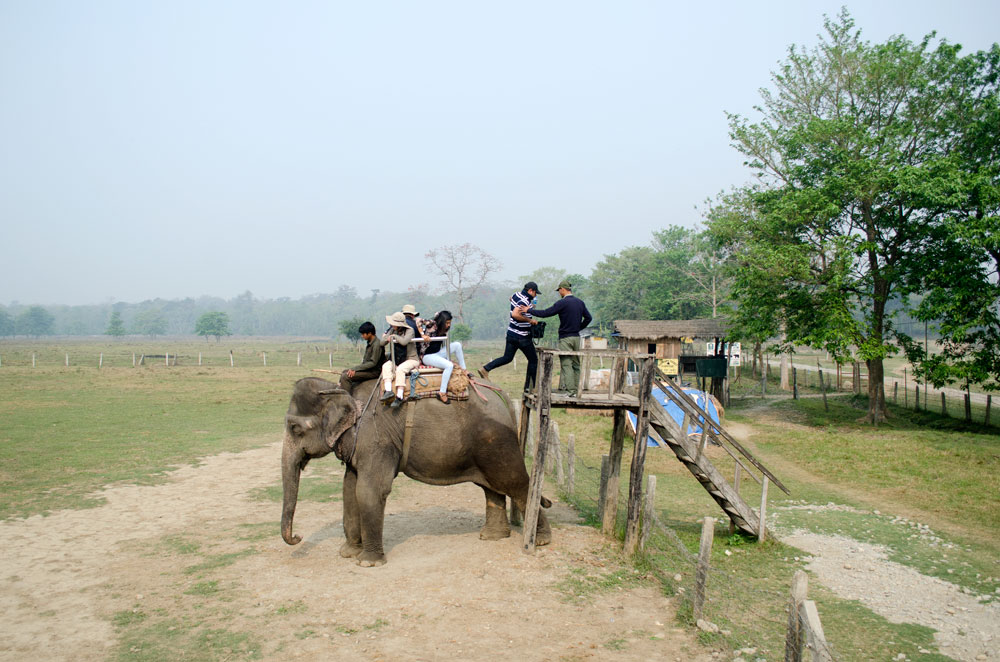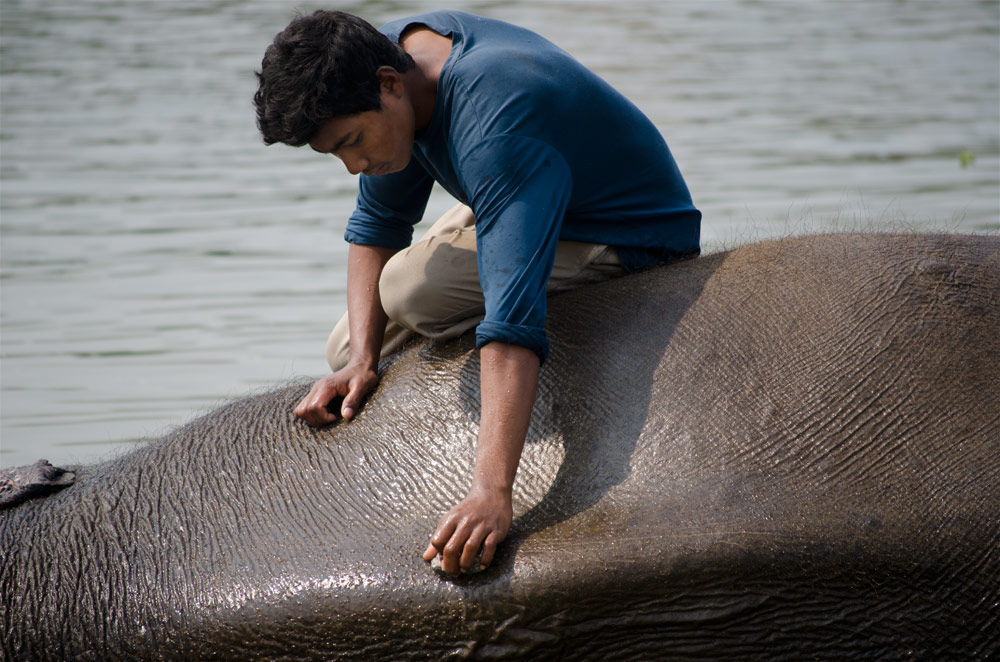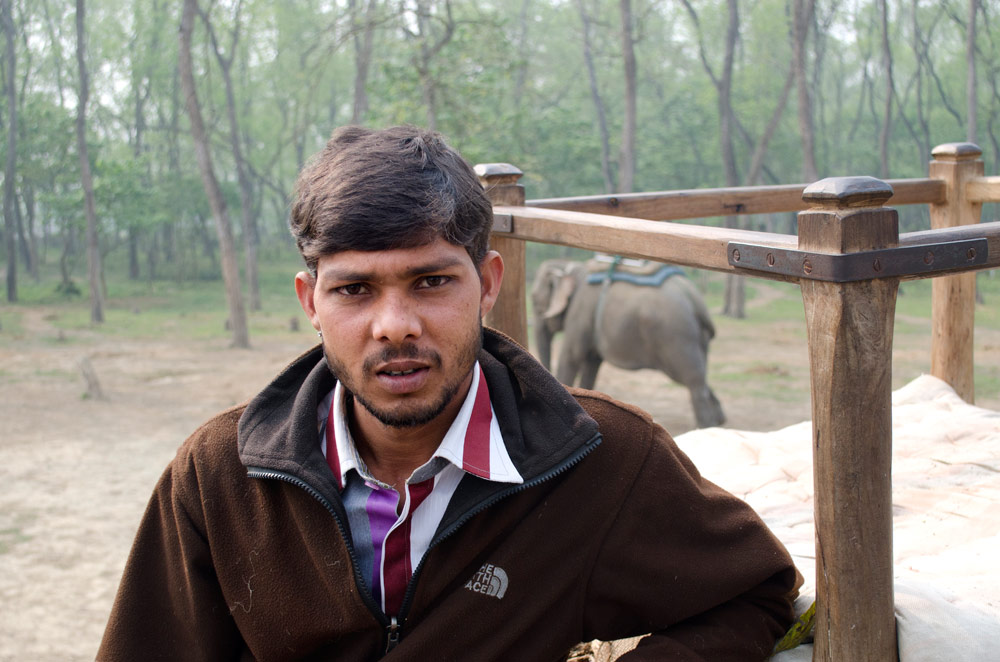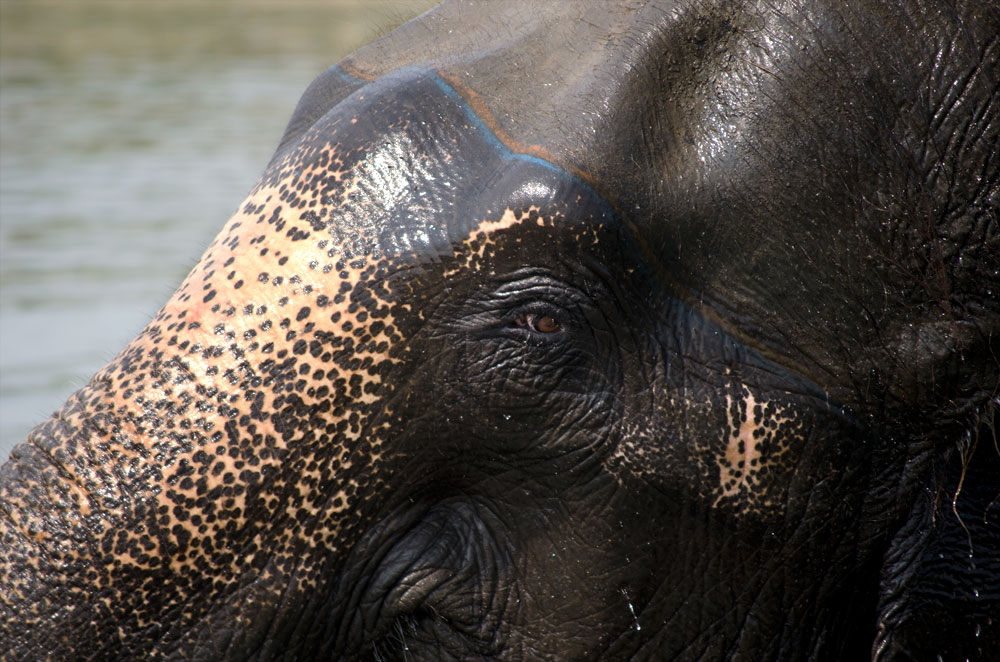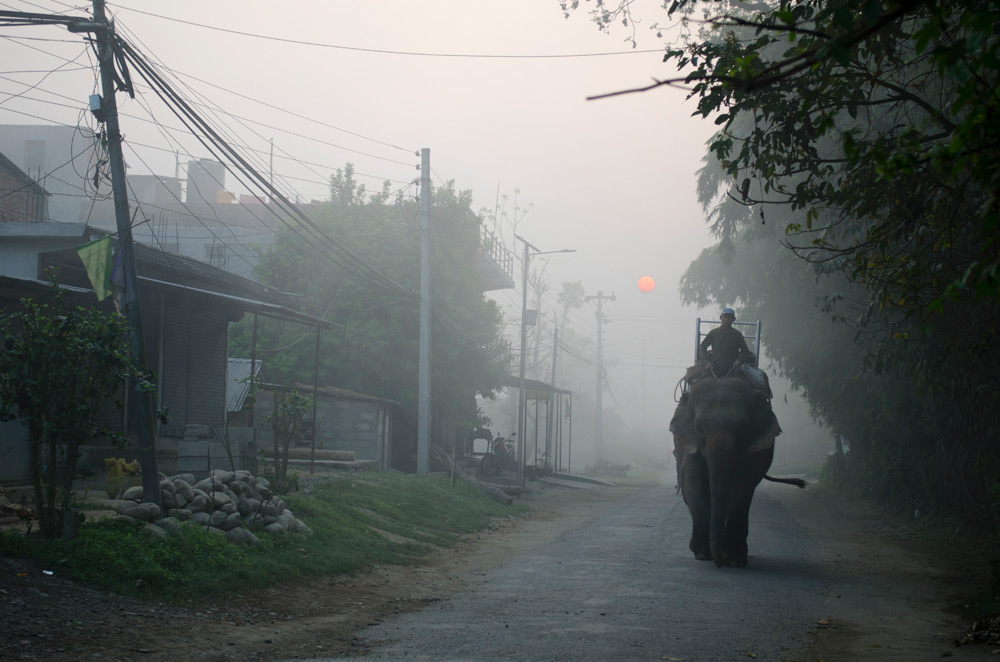Domestic Giants
The town of Sauraha is regarded as the Eastern gateway to Nepal’s Chitwan National Park. Sitting on the shores of the Rapti River, the village welcomes thousands of tourists annually, many of whom hope to catch a glimpse of the National Park’s wildlife. However, a visitor to Sauraha need not venture out of the town at all in order to encounter one of area’s star attractions, because Sauraha is home to approximately 65 domestic elephants and 50 government/INGO project owned domestic elephants.
The elephant has always been an important Religious symbol for many across the nation and Sauraha’s domestic population are still used in ceremonies and celebrations today. The creatures were also once paramount in warfare, offered as gifts between dynasty rulers and used in big game hunting throughout Nepal. Today, the elephants are still used for a variety of tasks.
As well as touring visitors through the dense Chitwan Jungle and sharing a ‘bath’ with tourists they are also used in the conversation of the vital natural habitat within Chitwan National Park. Biologists and conservationists using an elephant as transportation are able to continue their work without disturbing the endangered species they wish to research. The domestic giants are also used to clear areas of the jungle, causing much less disturbance and damage than a motorised vehicle would.
The majority of the elephants living in Sauraha are privately owned by faceless individuals, with the task of caring for each animal given to individuals living in the town. Those that care for the elephant, known as Mahouts, are paid a monthly salary in keeping with the average income for work in the tourism industry in Nepal. The elephant industry in Sauraha therefore provides a much needed life line to the Mahouts and their families. To be a Mahout is a dangerous profession though and stories of them being killed by a suddenly aggressive elephant are not unusual, with a death occurring on average once every 2 years.
The industry is rife with controversy with many animal rights activists believing that domesticating wild animals is unjust and the training methods to do so cruel. Other’s believe that the positives of using an elephant for tasks such as conservation and maintenance outweighs the negatives. The topic is complex and the following images are but a glimpse into this controversial industry.
